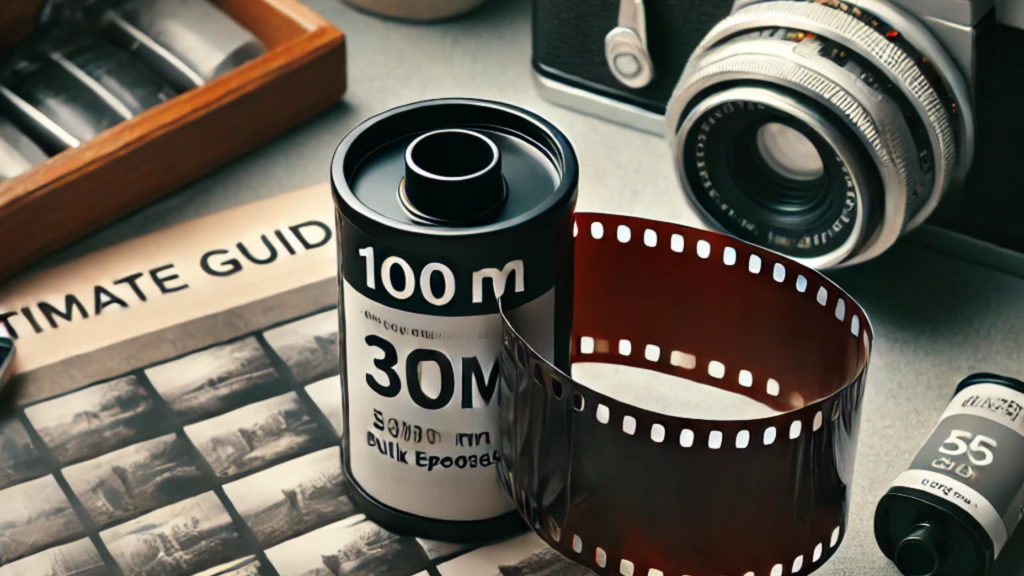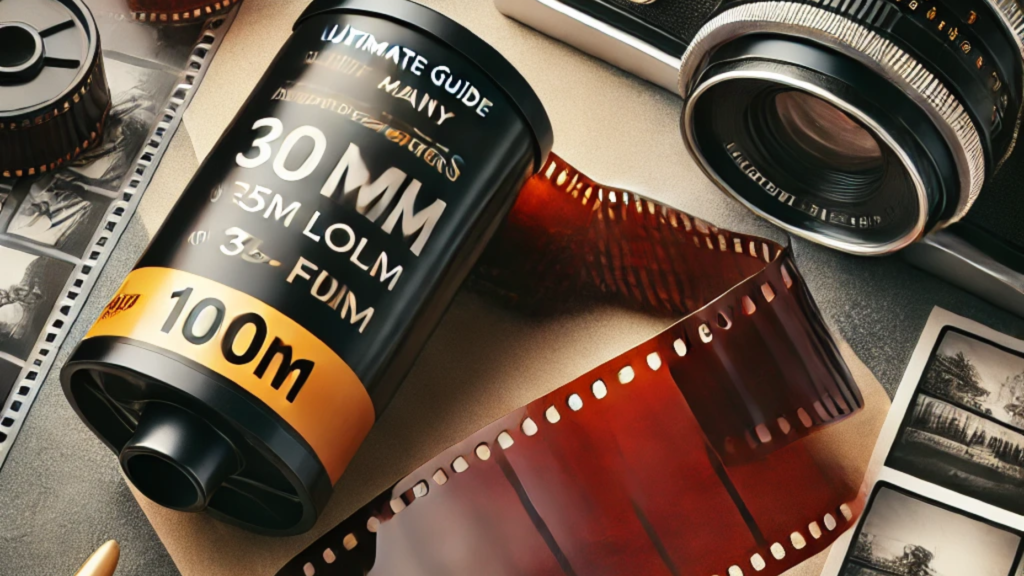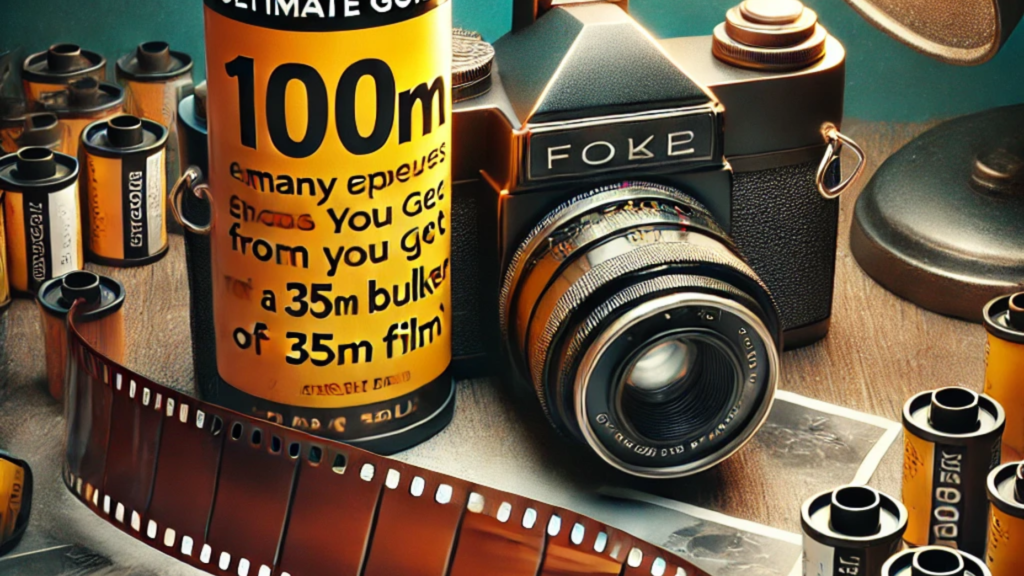Introduction
For film photographers, the allure of using bulk film loaders lies in the freedom to create custom-length rolls and the cost savings it offers. One of the most popular bulk film formats is the 35mm film, often purchased in 100-meter (approximately 328 feet) spools. But for those just venturing into bulk loading, a common question arises: how many exposures can one expect from a 100m bulk loader of 35mm film?
Knowing the answer to “how many exposures in a 100m bulk loader 35mm film” helps photographers estimate their supply, budget for film costs, and maximize each roll. While the exact number of exposures depends on factors like the length of each roll and the space for film leaders, this guide will delve into the nitty-gritty details to help you get the most out of your bulk film loader.
Quantity in a 100m Bulk Loader 35mm Film
A 100m bulk loader is a large roll of 35mm film (roughly 328 feet) wound onto a spool and kept inside a light-tight container. This bulk loader enables photographers to load individual canisters with custom roll lengths. Many bulk loaders are designed with a crank system, allowing you to measure and load film precisely into empty cartridges.
For photographers, bulk-loading film comes with several advantages:
- Cost Savings: Bulk film is typically cheaper per exposure compared to pre-loaded 35mm film canisters.
- Custom Lengths: You can load rolls of 12, 24, or even 36 exposures or tailor them to your preferences.
- Less Waste: With bulk loading, you can control the exact amount of film per roll, reducing waste.
Yet, one of the most important questions for anyone considering this option is how many exposures they can actually get from a full 100m bulk loader.

Calculating Exposures: how many exposures in a 100m bulk loader 35mm film
To determine “how many exposures in a 100m bulk loader 35mm film,” let’s start with some basics:
- Standard 35mm Film Frame Length: Each exposure on 35mm film measures approximately 36mm in length. It includes the space required for the frame and slight gaps between exposures.
- Leaders and Tails: In addition to the film used for exposures, each roll requires some additional film for the leader (the portion that allows the film to be loaded into the camera) and the tail (the portion needed for the film to stay in the canister). On average, this adds around 10–12 inches per roll.
- Length of 36-Exposure Roll: A typical 36-exposure roll, with leader and tail, requires about 5 feet (1.5 meters) of film.
By dividing 100 meters (328 feet) by the film length per roll, we can estimate the number of rolls and exposures.
Estimating Exposures Based on Different Roll Lengths
Using a 100m bulk loader of 35mm film, photographers can create rolls with various exposure counts. Here’s an estimate for common roll lengths:
36-Exposure Rolls
The standard 36-exposure roll requires approximately 5 feet (1.5 meters) of film. Therefore:
- Number of 36-Exposure Rolls = 328 feet / 5 feet ≈ 65 rolls.
- Total Exposures = 65 rolls * 36 exposures ≈ 2,340 exposures.
24-Exposure Rolls
A 24-exposure roll typically uses about 3.5 feet (1.1 meters) of film.
- Number of 24-Exposure Rolls = 328 feet / 3.5 feet ≈ 94 rolls.
- Total Exposures = 94 rolls * 24 exposures ≈ 2,256 exposures.
12-Exposure Rolls
For shorter rolls, a 12-exposure roll needs about 2 feet (0.6 meters) of film.
- Number of 12-Exposure Rolls = 328 feet / 2 feet ≈ 164 rolls.
- Total Exposures = 164 rolls * 12 exposures ≈ 1,968 exposures.
While these numbers provide a rough estimate, slight variations in leader length or wastage can impact the exact number of exposures.

Practical Tips for Bulk Loading 35mm Film
To make the most of a 100m bulk loader and get accurate exposure counts, here are some practical tips:
- Use a Reliable Bulk Loader: Choose a bulk loader with clear measurement markers or a frame counter to help you load precise lengths.
- Minimize Leader Length: While a longer leader makes loading easier, it also consumes more film. Aim to keep it minimal without compromising loading ease.
- Avoid Overloading: Loading more than the recommended exposures per roll can cause jamming in some cameras. Stick to the standard lengths (36, 24, 12) unless your camera can handle custom lengths.
- Keep Your Film Safe: Store bulk loaders in a cool, dry place, ideally in an airtight bag, to prevent moisture and light exposure.
By following these steps, you can maximize the use of your 100m bulk loader and consistently achieve your desired number of exposures.
How Film Width Affects Exposures in Bulk Loading
Another factor influencing “how many exposures in a 100m bulk loader 35mm film” is the width of the film. Although 35mm is standardized, slight variations can occur depending on the manufacturer. High-quality bulk film should offer consistent width, ensuring that frame spacing remains predictable. Lesser-quality films, however, might lead to slight deviations, which can reduce the number of exposures per roll or cause inconsistent spacing between frames.
Most popular brands, like Kodak, Ilford, and Fujifilm, produce high-quality bulk 35mm film with minimal width variations, making them ideal for achieving the full expected number of exposures from a 100m bulk loader.
The Cost-Effectiveness of Bulk Loading: A Closer Look
Bulk loading isn’t only about maximizing exposures; it’s also a way to save money. Let’s examine how bulk loading compares financially to pre-rolled 35mm film.
- Bulk Film Cost: A 100m bulk loader of 35mm film typically costs around $50–$80, depending on the brand and type.
- Cost per Exposure: For 36-exposure rolls, this translates to roughly $0.02–$0.03 per exposure, which is significantly cheaper than purchasing pre-loaded rolls.
For hobbyists and professionals who shoot frequently, bulk loading can be an economical choice, providing high-quality images at a fraction of the cost.

Summary of Bulk Loading Benefits
So, how many exposures in a 100m bulk loader 35mm film can you expect? Depending on the roll length you choose, a 100m bulk loader can yield between 1,968 and 2,340 exposures. This approach not only provides flexibility but also allows photographers to save on costs, create custom-length rolls, and reduce film wastage.
For those who enjoy the hands-on experience of film photography, bulk loading offers an opportunity to engage more deeply with the process, from rolling each cartridge to developing film.
Conclusion
When considering “how many exposures in a 100m bulk loader 35mm film,” it’s clear that bulk loading offers versatility, cost savings, and customization. Whether you prefer 36-exposure rolls for extended shooting sessions or shorter 12-exposure rolls for specific projects, bulk loading allows you to control your photography like never before.
If you’re a film enthusiast looking to get the most out of your photography journey, bulk loading is an excellent choice. Not only does it provide the potential for thousands of exposures, but it also brings a hands-on approach that connects you with every shot you take. So, if you’re ready to embark on a new chapter in film photography, pick up a 100m bulk loader of 35mm film and start rolling your custom-length canisters today!
